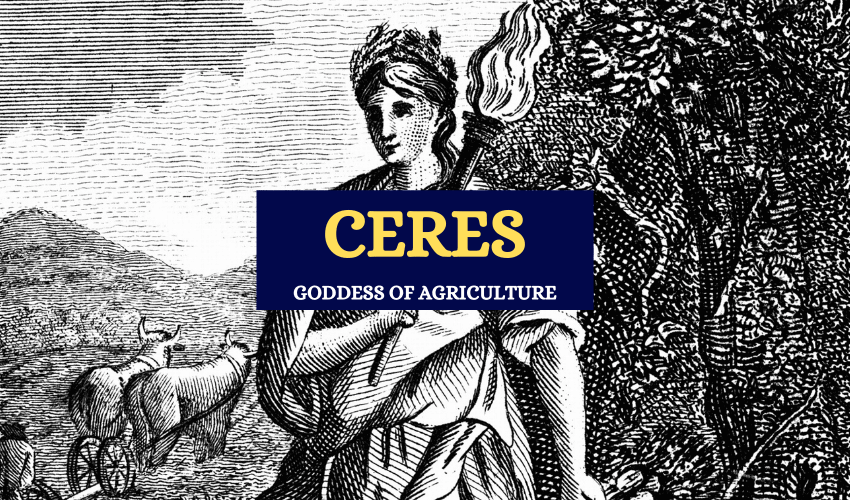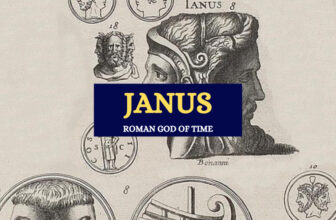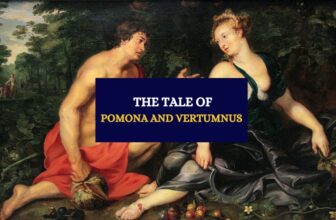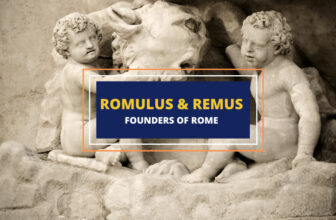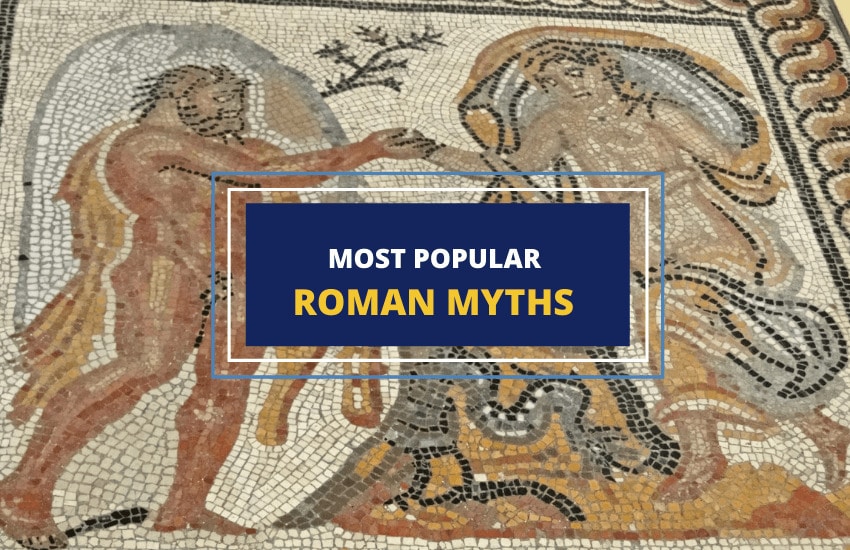
Table of Contents
Roman mythology is known for its rich stories. Most of the stories of Roman mythology were almost entirely borrowed from the Greek, but there are many local legends that developed in Rome and became distinctly Roman. Here is a list of the most famous myths that have been developed locally by Romans throughout the years.
Aeneas

The poet Virgil famously asked, while on his deathbed, to have his manuscript for the Aeneid destroyed, thinking that he had failed in the attempt at creating a myth that outlined Rome’s origins and emphasized its greatness . Luckily for the men and women who lived after his time, Emperor Augustus decided to preserve the epic poem and distribute it openly.
The Aeneid tells the story of Aeneas, a mythological Trojan expatriate prince who fled his country after the Trojan War. He carried with him the statues of the deities, Lares and Penates, and sought to find a new home to rebuild his kingdom.
After landing in Sicily, Carthage, and descending into the Underworld in a dramatic turn of events called Katabasis, Aeneas and his company reached the Western coast of Italy, where they were welcomed by Latinus, the king of Latins.
King Latinus had learned of a prophecy that told him his daughter should be married to a foreigner. Because of this prophecy, he gave Aeneas his daughter in marriage. After Latinus’ death, Aeneas became king, and the Romans regarded him as an ancestor of Romulus and Remus, the founders of Rome.
The Founding of Rome
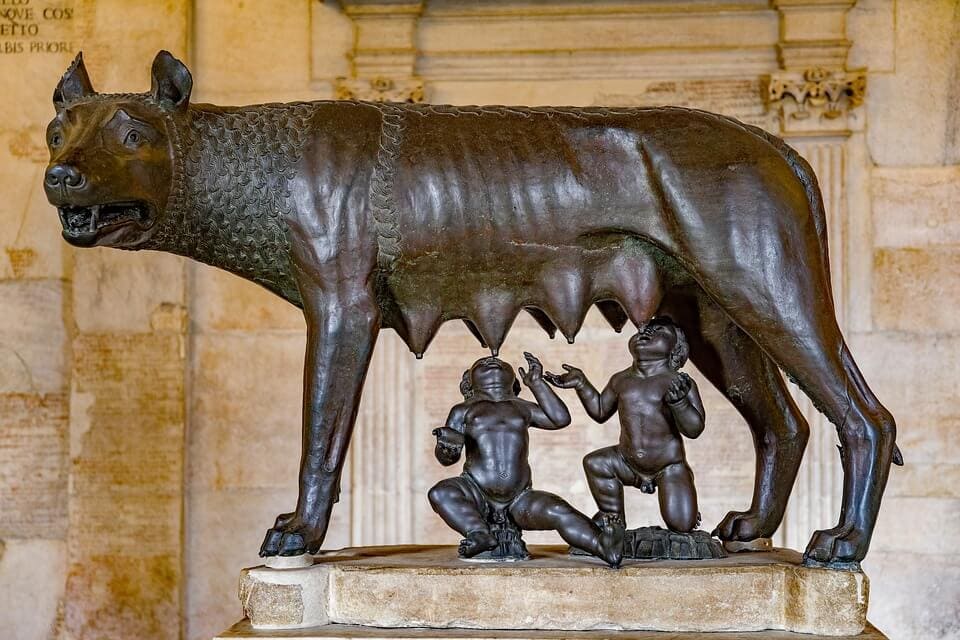
The legend of Romulus and Remus tells of the founding of Rome. The twins were said to be the children of Mars, god of war, and Rhea Siliva. However, the uncle of the twins King Amulius was fearful that Romulus and Remus would grow up to murder him and take over his throne. To thwart this from happening, he ordered his servants to kill them when they were just infants. The servants, however, felt pity for the twins. Instead of killing them as they’d been ordered to, they placed them in a basket and set it afloat on the river Tiber.
The infants were found and taken care of by a female wolf and after some time, they were discovered by a shepherd. The shepherd raised them and when they became adults, they fulfilled the prophecy and killed their uncle Amulius, the king of Alba Longa.
Having restored the former king, Numitor (who, unbeknownst to them, was their grandfather), the twins decided to found a city of their own. However, they couldn’t agree on where to build the city, and quarreled over this. Romulus chose Palatine Hill, while Remus chose Aventine Hill. Unable to come to an agreement, they had a fight which resulted in Romulus killing his brother. He then went on to found the city of Rome on the Palatine Hill. Some scholars say that this bloody act of foundation set the tone for most of Rome’s violent history.
Rape of the Sabine Women
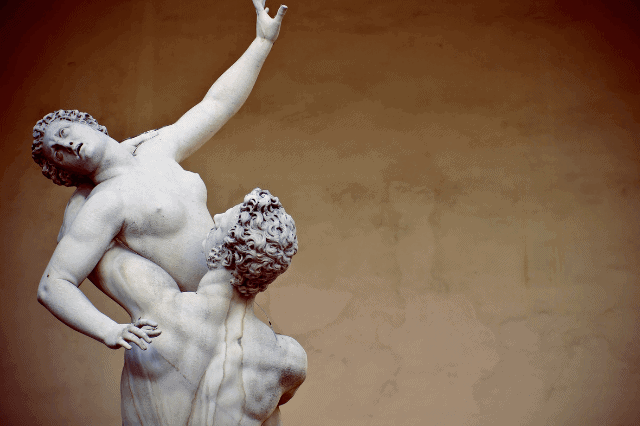
Rome had many neighbors at first, including Etruria located in the northwest and Sabinum in the northeast. As the population of early Rome was comprised almost entirely of men (bandits, outcasts, and expatriates), Romulus devised a plan for them to wed a number of women from nearby cities. He did this hoping that it would strengthen the city further.
However, the negotiations broke down when the Sabine women declined to marry the Romans, fearing that they would become a threat to their own city. The Romans planned to abduct the women during the Neptune Equester festival, which people of all villages attended, including the Sabines.
During the celebrations, Romulus gave a signal to his men by taking his cloak off his shoulders, folding it, and then throwing it around him again. Upon his signal, the Romans kidnapped the Sabine women and fought off the men. Thirty Sabine women were abducted by Roman men at the festival. Allegedly, they had been virgins, all except for one woman, Hersilia, who was married at the time. She became Romulus’ wife and it’s said that she later intervened, putting an end to the war that ensued between the Romans and the Sabines. Note that in this context, the word rape is cognate with rapto, which means kidnap in Romance languages.
Jupiter and the Bee

This story is often told for the morals that it teaches children. According to the myth, there was a bee who was tired of humans and animals stealing his honey. One day he brought Jupiter, the king of gods, fresh honey from the hive and asked the god for help.
Jupiter and his wife Juno were delighted with the honey and agreed to help the bee. The bee asked the king of gods for a powerful stinger, saying that if any mortal tried to steal the honey, he would be able to protect it by stinging them.
Then Juno suggested that Jupiter grant the bee his request as long as the bee was ready to pay for it. The payment was that any bee that used their stinger would have to pay for it with their life. The bee was terrified, but it was too late for Jupiter had already given him the stinger.
The bee, after thanking the King and Queen, flew home and noticed that all the other bees in the hive had been given stingers as well. At first, they were overjoyed with their new stingers but were horrified when they found out what had happened. Unfortunately, there was nothing they could do to remove the gift and this is why even today, any bee that uses its stinger pays for it with its life.
The Underworld and the River Styx

When Aeneas descended into the Underworld, he met Pluto, the god of death (Greek equivalent Hades). The boundary between the Earth and the Underworld is formed by a the River Styx, and those who had to cross the river had to pay Charon the ferryman with a coin. This is why Romans buried their dead with a coin in their mouths, so they could pay the fare to cross the river.
Once in the Underworld, the dead entered Pluto’s domains, which he ruled with a strong hand. He was stricter than the rest of the gods. According to Virgil, he was also the father of the Furies, or the Erinyes, who were vicious deities of vengeance. The Erinyes judged and destroyed any soul who had sworn a false oath when living.
Jupiter and Io
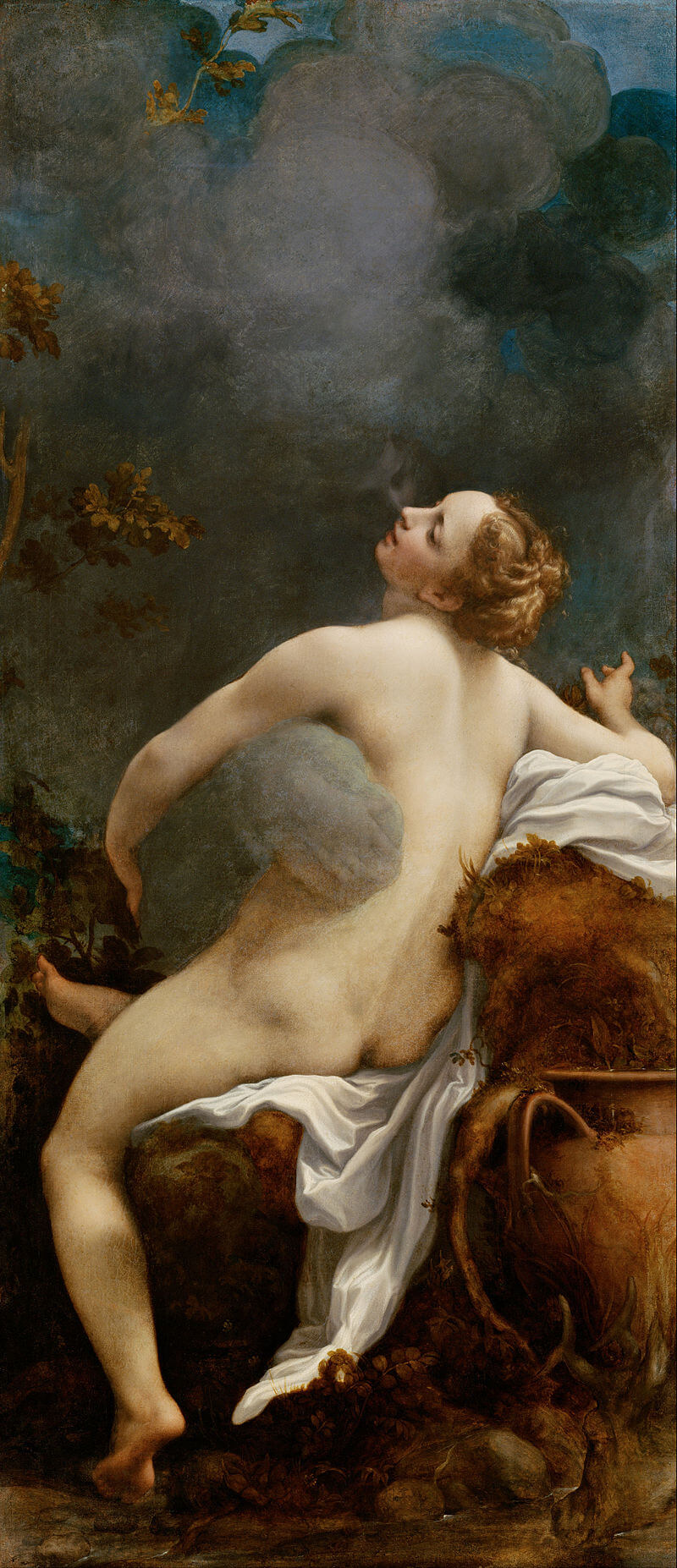
Unlike Pluto, who Virgil claims was monogamous, Jupiter had many lovers. One of them was the priestess Io, whom he visited secretly. He would turn himself into a black cloud in order to be close to Io, so his wife Juno would not know of his infidelity.
However, Juno was able to recognize her husband in the black cloud, and commanded Jupiter to never see Io again. Of course, Jupiter was unable to comply with her request, and turned Io into a white cow to conceal her from Juno. This deception did not work, and Juno put the white cow under the surveillance of Argus, who had a hundred eyes and could always keep watch over her.
Jupiter then sent one of his sons, Mercury, to tell stories to Argus so he would fall asleep and he could free Io. Although Mercury succeeded, and Io was freed, Juno got so angry that she sent a gadfly to sting Io and finally get rid of her. Eventually Jupiter promised not to chase Io ever again, and Juno let her go. Io began a long voyage that eventually took her to Egypt, where she became the first Egyptian goddess.
Lucretia

Historians’ opinions are divided as to whether Lucretia’s story is a myth or an actual historical fact. But, whatever the case, it is the event responsible for Rome’s form of government to switch from a Monarchy to a Republic. She was a Roman noblewoman, and the wife of Lucius Tarquinius Collatinus, a Roman consul.
While Lucretia’s husband was away at battle, Tarquin, the son of Roman king Lucius Tarquinius Superbus, raped her, causing her to take her own life in shame. This prompted an immediate rebellion against the Monarchy, led by all the most important families.
Lucius Tarquinius Superbus was overthrown, and a Republic was established in Rome. Lucretia became forever a heroine and a role model to all Romans, as her story was crudely told by Livy and by Dionysius of Halicarnassus.
Apollo and Cassandra
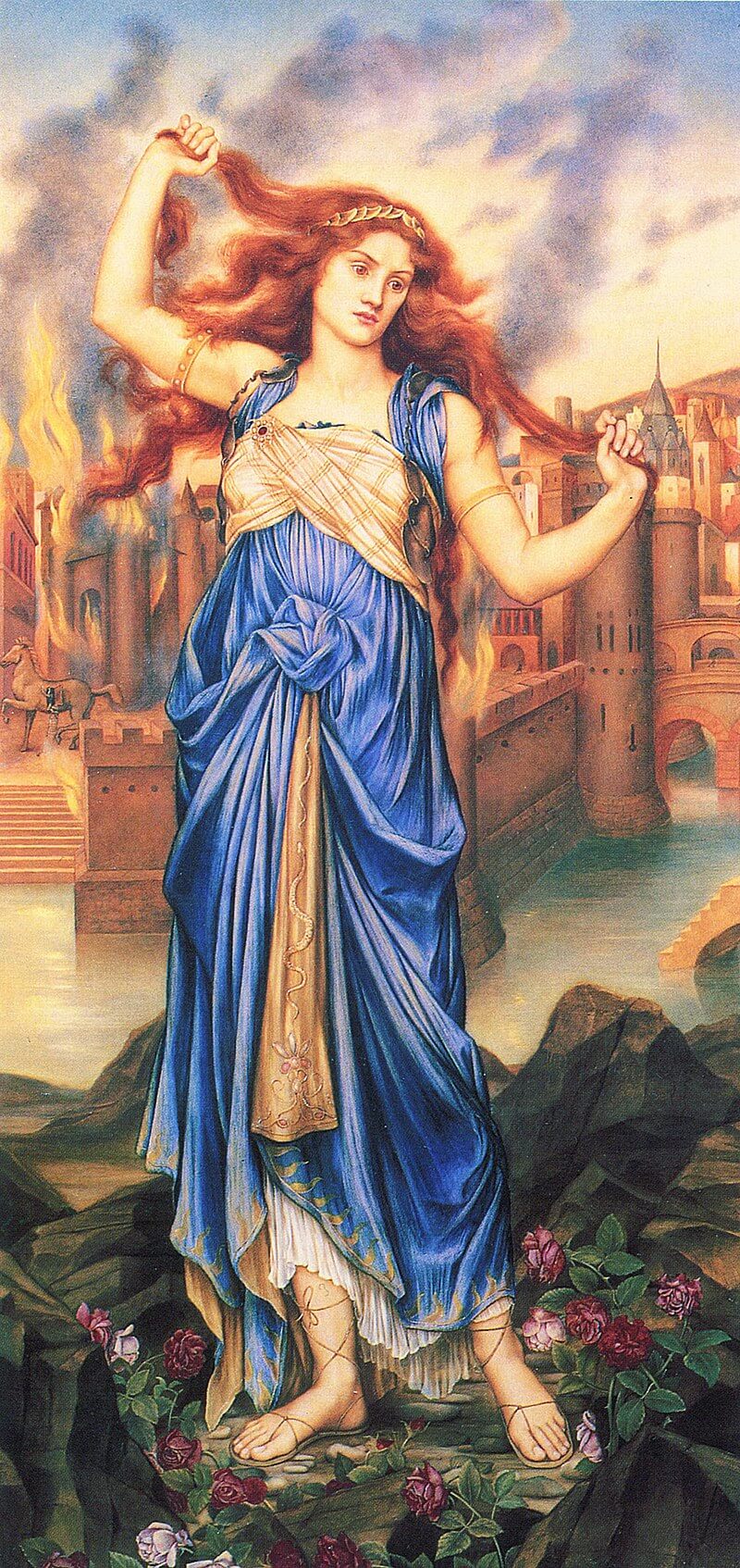
Apollo was one of the most important gods of both the Greek and Roman pantheons. According to this myth, Cassandra was the stunningly beautiful daughter of king Priam of Troy. Apollo could not help but fall in love with her, and made her all sorts of promises, but she rebuffed him. Finally, when he offered her the gift of prophecy, she agreed to be with him.
However, Cassandra was still not in love with Apollo and once she had received the gift, she refused Apollo’s further advances. This angered Apollo so much, that he proceeded to curse her. The curse was that no one would believe her when she prophesied anything.
Cassandra now had the gift of prophecy but had no way to convince others that what she was saying was true. She was considered a liar and a deceitful woman, and was imprisoned by her own father. Of course, no one believed her when she tried to warn them of the fall of Troy, which eventually came true.
In Brief
Roman myths often had a part of reality and a part of fiction. They modeled the behaviors of the Romans, and even motivated historical changes. They told the stories of gods and goddesses, men and women, both in this world and in the Underworld. Many of them were borrowed from the Greek, but they all have a distinctly Roman flavor.




